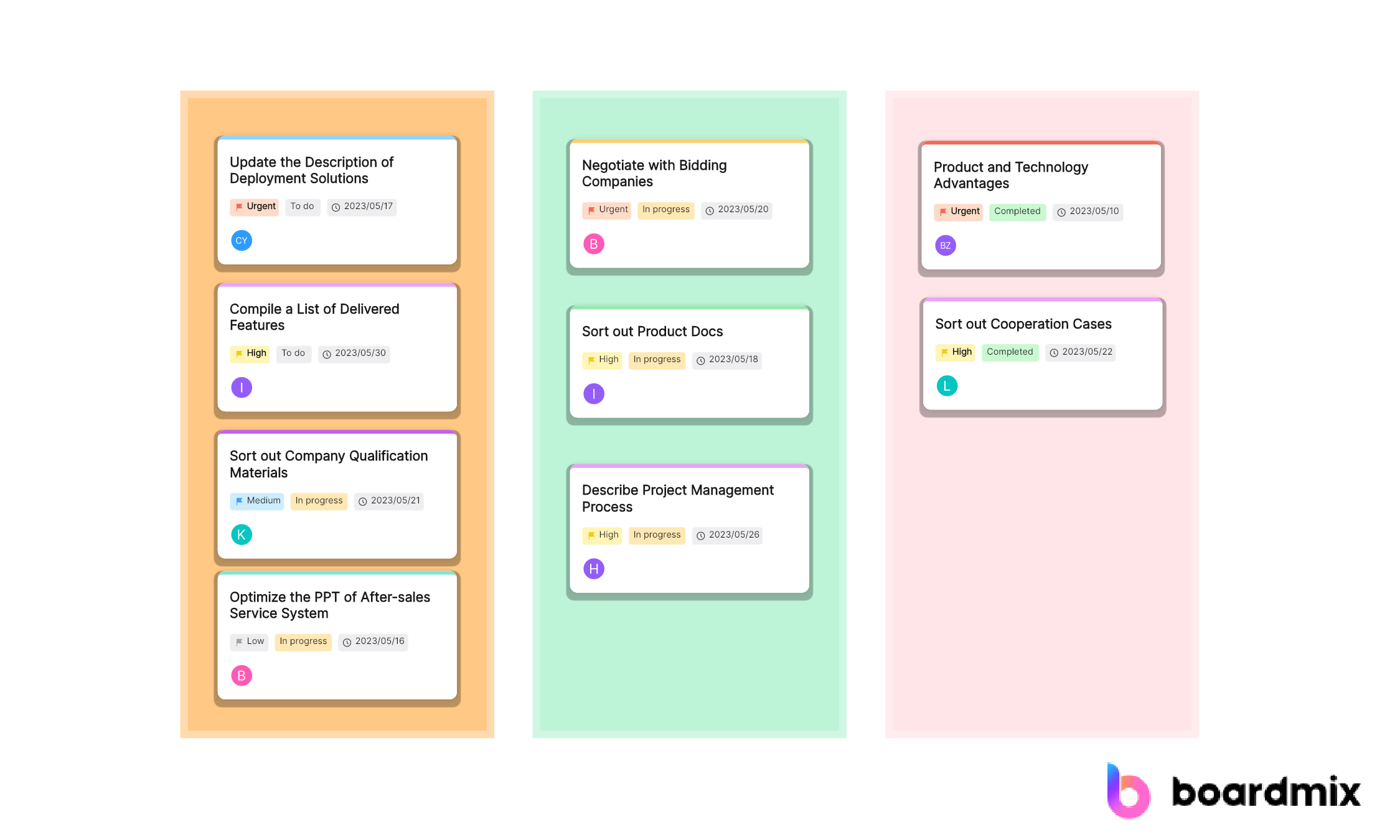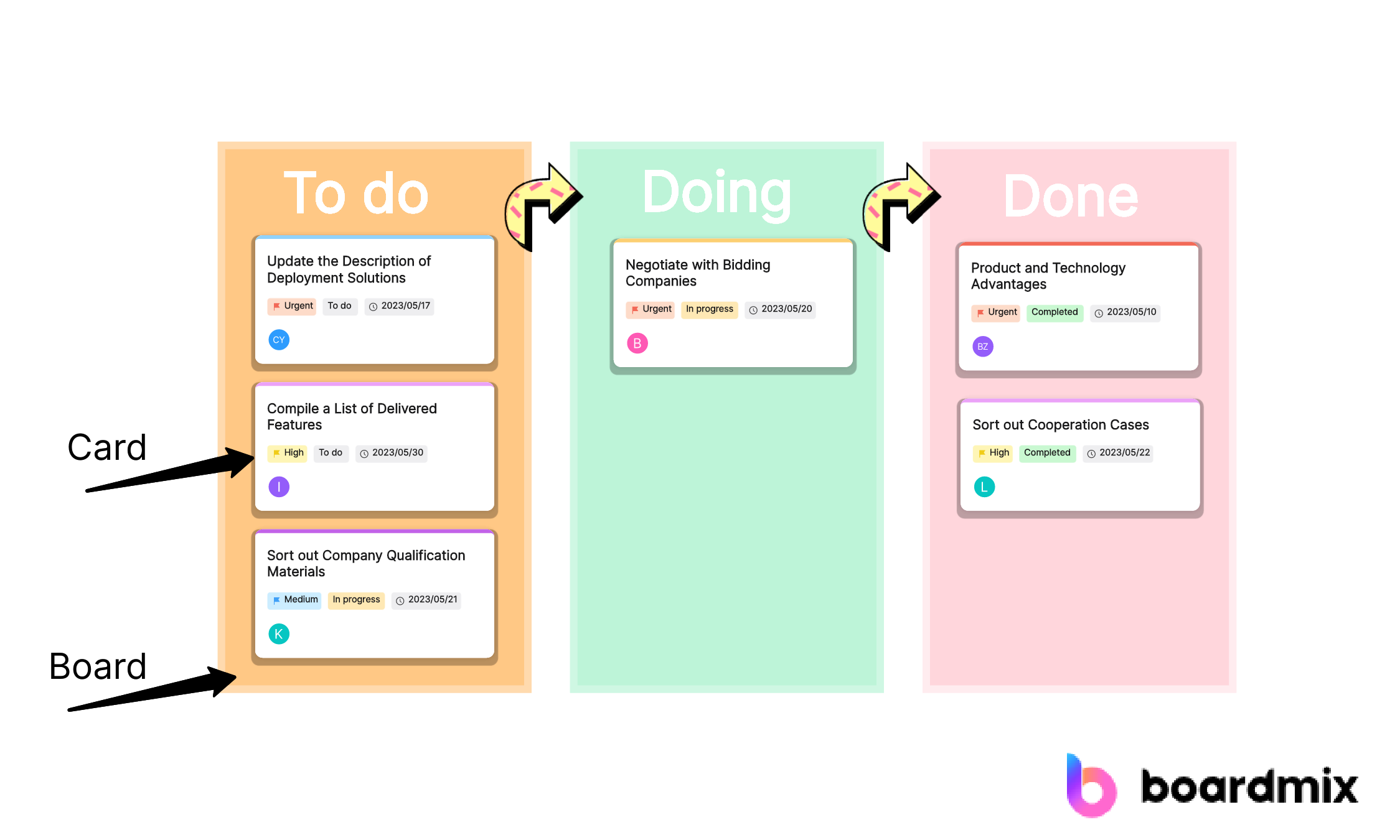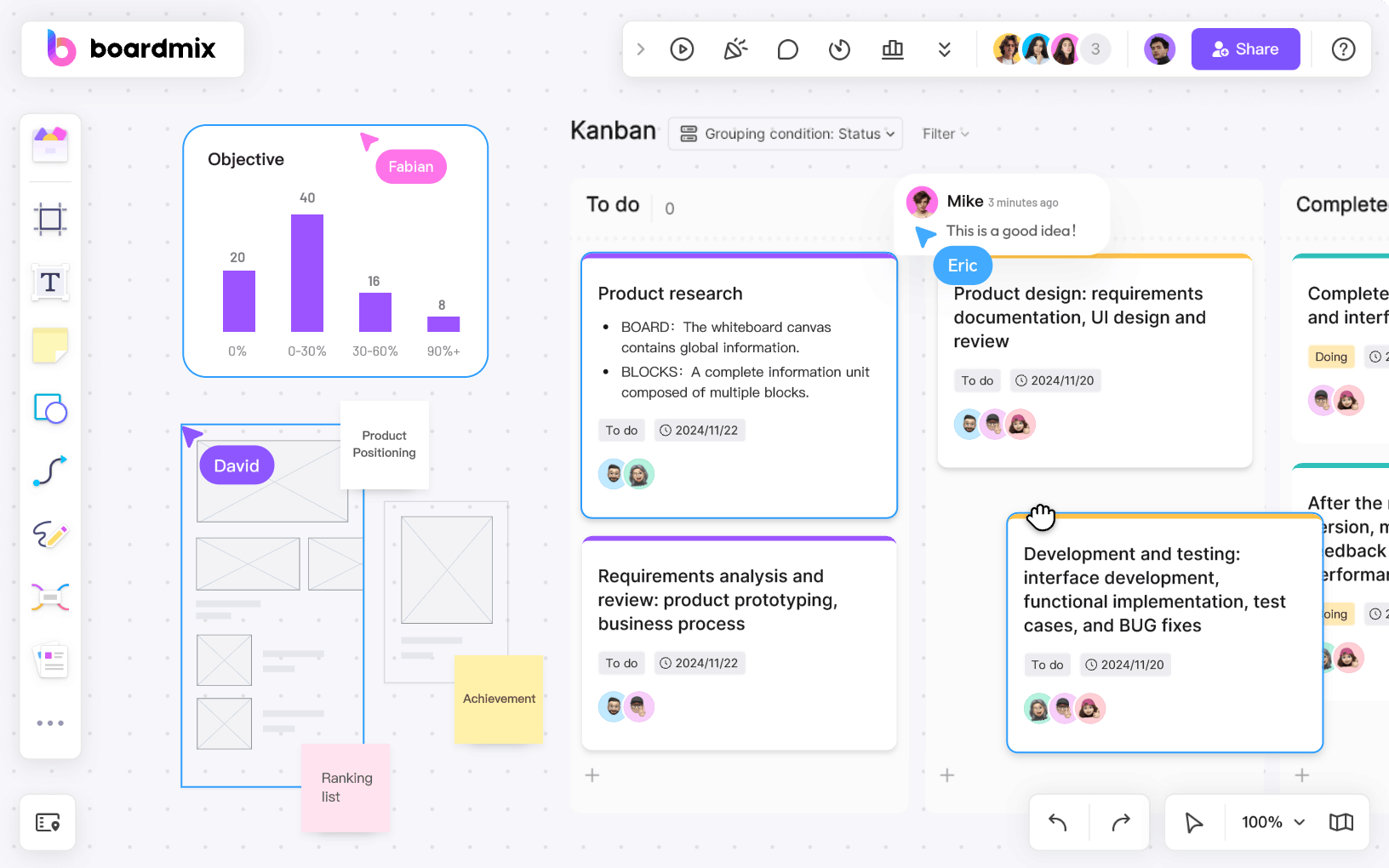In the realm of project management and workflow optimization, the Kanban method has emerged as a powerful and flexible tool for visualizing work processes and enhancing team efficiency. At the heart of the Kanban system are Kanban cards, which play a crucial role in bringing order and transparency to complex projects. This article explores the concept of Kanban cards, their significance, and how they contribute to the success of Kanban methodologies.
Part 1. What is Kanban?
Kanban, which translates to "visual card" in Japanese, originated from the Toyota Production System in the 1950s. Initially used in manufacturing to manage inventory and production processes, Kanban has evolved into a popular project management methodology across various industries.

Kanban is founded on the principles of visualizing work, limiting work in progress, and continually improving the flow of work. It provides teams with a visual representation of their tasks, allowing for better communication, increased collaboration, and the ability to identify and resolve bottlenecks promptly.
Part 2. What is a Kanban Card?
A Kanban card is a visual representation of a task or work item within the Kanban system. It serves as a key element for visualizing and managing work in a Kanban process. The card contains essential information about the work item and helps team members, managers, and stakeholders understand its status and details. Here are the typical components of a Kanban card:
- Task Title: A concise and clear title or name of the task, providing a quick understanding of what the work item entails.
- Description: A brief description of the task, outlining its purpose, objectives, or any other relevant information that helps in understanding the work.
- Assignee: The person or team responsible for completing the task. This provides clarity on who is accountable for the work item.
- Priority: Some Kanban systems include a priority indication to highlight the relative importance or urgency of the task.
- Due Date: If applicable, the date by which the task should be completed. This helps in managing and prioritizing tasks based on deadlines.
- Work Item Number: A unique identifier or number assigned to the task, aiding in tracking and referencing tasks in a large workflow.
Kanban cards are typically placed on a physical or digital Kanban board, with each card corresponding to a specific task or work item. As the work progresses through different stages of the workflow, the cards are moved across the board accordingly. The visual nature of Kanban cards and boards provides a real-time representation of work status, making it easier for teams to collaborate and manage their workflow effectively.
Part 3. How Kanban Cards Work
Kanban cards are a key component of the Kanban system, which is an agile project management and process improvement approach. The term "Kanban" is Japanese for "visual card" or "signboard." Kanban cards help visualize work, limit work in progress, and maximize efficiency. Here's how Kanban cards work:
- Visualization: Kanban cards provide a clear visual representation of the work at hand. Team members can quickly assess the status of tasks, identify bottlenecks, and understand the overall flow of work through the system.
- Limiting Work in Progress (WIP): One of the fundamental principles of Kanban is to limit the number of tasks in progress simultaneously. Kanban cards help enforce WIP limits, preventing teams from becoming overloaded and ensuring a smoother workflow.
- Continuous Improvement: By regularly reviewing and analyzing Kanban cards and their movement across the board, teams can identify areas for improvement. This iterative process allows for the implementation of changes that enhance efficiency and productivity.
- Enhanced Collaboration: Kanban cards facilitate communication among team members. As cards move through different stages of the workflow, everyone can see the progress, understand dependencies, and collaborate effectively.
Part 4. What Are Two Types of Kanban Cards?
While there isn't a strict classification of Kanban cards into distinct types, variations can occur based on the specific needs of a team or organization. However, here are two common approaches or types that are often used:
1. Standard Kanban Cards
These are the traditional Kanban cards containing essential information about a work item, such as the task title, description, assignee, priority, due date, and work item number.
Standard Kanban cards are versatile and can be customized based on the specific requirements of the team or project.
2. Class of Service Cards
In some Kanban systems, teams use class of service cards to prioritize work based on different classes or categories.
Each class of service may have its own set of rules, policies, or handling instructions. For example, a team might have different classes like expedite, standard, or fixed date, each with its own criteria for priority and treatment.
Class of service cards helps teams categorize and manage work items more effectively, ensuring that tasks are prioritized based on their importance and urgency.
It's important to note that these are not universally standardized types, and the design and use of Kanban cards can vary from one organization to another. The goal is to create a visual representation of work that suits the team's specific workflow and requirements.
Part 5. What Is the Difference Between Kanban Board and Kanban Card?
The Kanban board and Kanban card are two essential components of the Kanban system, and they work together to visualize and manage work. Here's a breakdown of the key differences between a Kanban board and a Kanban card:

Kanban Board:
Definition: A Kanban board is a visual representation of the workflow. It consists of columns that represent different stages of the process, and each column contains cards representing individual tasks or work items.
Functionality: The Kanban board provides a high-level view of the entire workflow, from the initial stage of work to completion. It helps team members, managers, and stakeholders understand the status of tasks and how they move through the various stages.
Customization: Kanban boards are highly customizable to fit the specific needs of a team or project. Common columns include "To Do," "In Progress," and "Done," but teams can add or modify columns based on their unique workflow.
Kanban Card:
Definition: A Kanban card is a visual representation of a specific task or work item within the Kanban system. It contains essential information about the task, such as the title, description, assignee, priority, due date, and work item number.
Functionality: The Kanban card provides detailed information about a particular task, allowing team members to understand its requirements, progress, and status. As work progresses, the card is moved across the columns on the Kanban board to reflect the task's current stage in the workflow.
Customization: Kanban cards are also customizable, and their design can vary based on the needs of the team. The information displayed on the card is typically tailored to provide relevant details for effective task management.
Part 6. Best Kanban Tool – Boardmix
Boardmix is a revolutionary online whiteboard tool that takes Kanban to the next level. It's not just a digital board; it's an interactive workspace designed to streamline your workflow and boost productivity. With Boardmix, you can visualize your tasks, projects, or workflows in a flexible and intuitive way. Its extensive library of drawing templates allows you to customize your Kanban board according to your needs. Whether you're managing a small project or coordinating a large team, Boardmix's robust features make it easy to track progress, identify bottlenecks, and promote collaboration.

Key features of Boardmix Kanban tool:
- Interactive Workspace: Boardmix provides an interactive workspace that allows teams to collaborate in real-time, enhancing communication and productivity.
- Flexible Visualization: With Boardmix, you can visualize your tasks, projects or workflows in a flexible and intuitive way, making project management easier and more efficient.
- Extensive Drawing Templates: Boardmix offers an extensive library of drawing templates that can be customized to fit any project or workflow, providing a unique and personalized Kanban experience.
- Real-Time Progress Tracking: Track the progress of your tasks in real time with Boardmix's robust tracking features, helping you identify bottlenecks and improve efficiency.
- Enhanced Collaboration: Promote collaboration within your team with Boardmix's shared boards and real-time updates, ensuring everyone is on the same page.
Conclusion
Kanban cards are a cornerstone of the Kanban methodology, providing a tangible and visual way to manage tasks and streamline workflows. By embracing the principles of visualizing work, limiting work in progress, and continuously improving, teams can harness the power of Kanban cards to enhance productivity, collaboration, and overall project success. Whether applied in software development, marketing, or any other industry, Kanban cards offer a versatile and effective approach to managing complex work processes.
With its interactive workspace and extensive library of drawing templates, Boardmix offers a unique and personalized Kanban experience that promotes efficiency and collaboration. Don't just take our word for it - try Boardmix today for free and see the difference it can make in your workflow.








